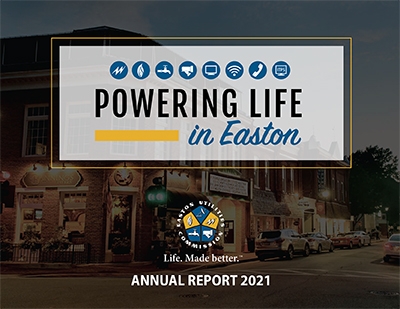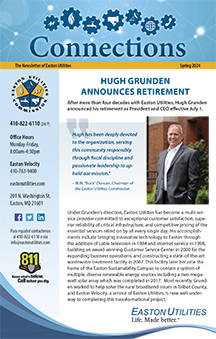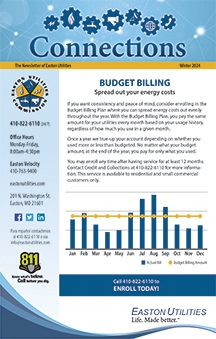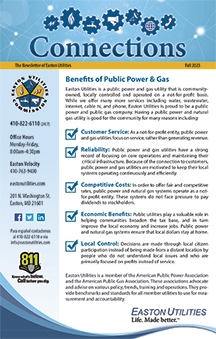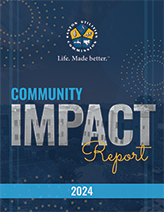Cargas Eléctricas
Una factura eléctrica residencial se compone de cuatro cargos principales: Cargo de Cliente, Cargos de Distribución, Cargos de Energía Y Impuestos y Recargos.
Cargo al Cliente
Esta cantidad es un cargo fijo por metro. Paga los costos que no varían con el uso, como la lectura/mantenimiento del medidor, los costos de facturación, el servicio al cliente, el equipo que brinda servicio a la propiedad del cliente, así como una parte del sistema de cables, postes y tuberías.
Cargo de Distribución
El cargo de Distribución es un costo fijo por kilovatio hora que soporta el costo de construcción, operación, mantenimiento y administración del sistema eléctrico. Este cargo no incluye el costo de la electricidad que utilizó.
Carga de Energía
El cargo de energía incluye el costo de la energía que usó y Easton Utilities compró en su nombre. Como empresa de servicios públicos sin fines de lucro, Easton Utilities compra la energía que los clientes necesitan y transfiere el costo sin recargo.
Impuestos y Recargos
El estado de Maryland requiere que cobremos ciertos impuestos y recargos que luego se envían directamente al estado.
Esforzándose por Ahorrarle Dinero
Easton Utilities compra energía eléctrica en el mercado mayorista. Las compras pueden ser contratos largo o corto plazo o precios de mercado y en “tiempo real” diarios. Para ayudar a mantener los costos bajos, podemos utilizar nuestra propia instalación de generación eléctrica. Esto significa que si los precios en el mercado se vuelven demasiado altos, podemos hacer funcionar nuestros propios generadores a un costo menor y pasar esos ahorros directamente a usted.
Aprende más…
Consejos sobre cómo conservar energía para ayudar a reducir su factura.

